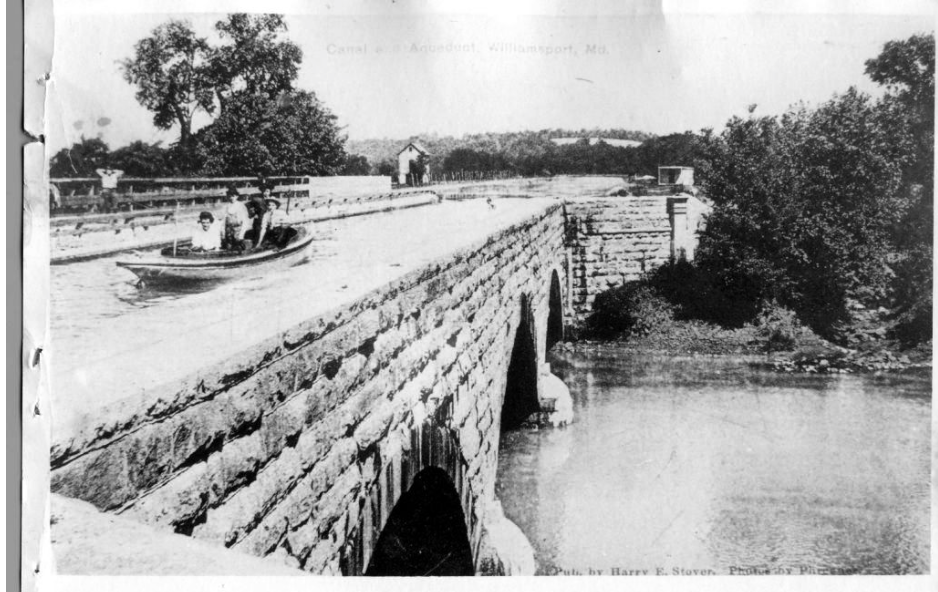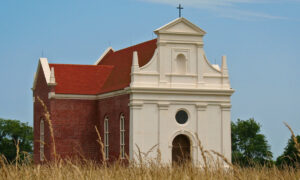Part 1: Pre-C&O Canal and Early MD History

Captain Kate and the C & O Canal
I grew up an hour and a half away, on the side of a mountain, from the C&O Canal. As a kid, I understood what a canal was and I had heard of the C&O, but never fully grasped the significance of it until I studied at Frostburg State University where I majored in Elementary Education. I had a professor that modeled facilitating a book club with Captain Kate. The historical fiction book itself told of the 184.5-mile journey from Cumberland to Washington D.C. along the canal. With that book and a concurrent Maryland History course I was taking, I started to see Maryland’s early blueprint and growth patterns.

The Charter for Maryland
Maryland was the first proprietary colony (chartered by the Calverts) and they founded it for religious freedom and the underlying hopes of finding gold. George Calvert was the “right-hand man” (what a present-day secretary of state would be) to King James I of England and had peaked in terms of advancement based on his Catholic Religion. Realizing his future, George asked King Charles I (son of James I and pictured above) a favor in terms of a charter in the new world (present-day Eastern United States) that England was currently in the infancy of settling.
Yeah, George Calvert wanted a secure settlement where he and the future of his family could practice their religion without glare, but… George was also a businessman. Calvert had delusions of gold. (Ironically, he would never find gold in Maryland during his life. Settlers did not find it until 100 years after his death.)
The plan to settle present-day Maryland (Named after Charles I’s wife Mary) was a slow process. So slow that George Calvert would never see the plan set into action. The King bestowed the title of Lord Baltimore to Calvert and then Calvert petitioned to get the land north of the Potomac River in 1625. However, the King did not grant the charter until 1632, unfortunately, just a couple of months after Calvert’s passing. Calvert’s son Cecilus next owned the charter and eventually became the first governor of the Maryland Colony. The problem was that they are still two years away from physically setting foot in Maryland.
The Export Crop of Maryland: Tobacco
Fast forward two years the occupants of both the Ark and the Dove ships finally reach present-day Southern Maryland after a brutal three-month voyage. (Of which were 66 days at sea). March 25, 1634, the ships finally made it to Maryland and more specifically St. Clements Island. After some negotiating and trade with Yaocomico Native Americans, early settlers purchased land on the western shore of the Chesapeake Bay near the confluence of the Potomac River. This spot would serve as the first colony and eventual capital of Maryland… St. Mary’s City. (Present-day St. Mary’s College is there.)
Maryland’s major export was the cash crop of tobacco. The climate around the bay supported the cultivation of the highly sought-after resource. Growing tobacco created a centralized economic choice. The crop required a great deal of land, not just for its current yield… but for future cultivation. Tobacco demanded most of the nutrients and minerals provided by the acreage it grew on. It depleted those growth necessities so quickly that farmers had to employ field rotation methods. These plantations had to have access to bodies of water not just for water for the crop, but for transportation as quickly as possible to Europe. (Europe loved their New World tobacco.)

Go West or Stay East
Eventually, Maryland outgrew its capital as a settlement along the Bay as the population pushed further north. At the time of its founding, St. Mary’s City was the center of the state, but over time the current capital of Annapolis was the more central pin of Maryland. As long as there was water for transportation there was more than likely going to be some sort of community or settlement. The Chesapeake Bay and the Potomac River were lifelines of early travel.
Early Maryland settlers saw modern Western Maryland as the frontier of civilization. The areas furthest away from the bay were the least populated. Over time the natural resources and space of the frontier beckoned for attention.
The geography and resources of Maryland are the tales of two sides. Western Maryland sits at a much higher seat in the sky and was/is known for its timber and mineral output. Eastern Maryland’s keystone of economics was the resources provided by the Chesapeake Bay. Most of that portion of the state lies along the Atlantic Coastal Plain. Unfortunately, for population purposes, most of that real estate filled up rather rapidly. There needed to be a way to bridge the rapid and shallow portions of the Potomac River to access not only the vast space but the rich resources that Western Maryland offered.
The Canal Work Begins with Difficulty
Long before railroads and interstate highways, settlers used rivers to create interconnecting networks of transportation on unpolished land. The pros certainly outweigh the cons, but restrictions on accessibility based on rapid or shallow water curtailed boat travel. The time sequence of the canal began in 1785 by a man you might have heard of, George Washington when he started the Potomac Company. Washington, being the visionary he was, saw the dire need for a network of transportation that would link the Potomac River, James River, and Ohio River. On paper, it seemed like a manageable idea, but for it to happen he would need to create a leapfrog of canals, locks, and roads to forge forward.
Washington and the Potomac Company’s objective met with unforgiving weather, dangerous working conditions, and low wages. Skilled laborers were expensive and hard to come by so the one hundred or so workers were a blend of hired hands, slaves, and indentured servants. Severe injury or even death marred the inexperienced crew as it also battled unforgiving weather leaving gaps in contract expectations. The lack of meeting obligations and labor disputes delayed pay and supplies which, paired with worker jealousy, all but tied progress to a standstill.
Where will Washington’s Potomac Company Go?
One area-specific story that came out of the labor issues involves notable Berkeley County, WV engineering figurehead James Rumsey. Rumsey was likely from Cecil County, MD, but made his way to Bath, WV (present-day Berkeley Springs, WV.) in 1782. While within the Eastern Panhandle, Rumsey, owned and operated an inn that used the heralded healthy waters of Berkeley Springs. Rumsey processed a very logical skill set and was notable for architecture and engineering. His historic path crossed that of George Washington and he designed a house and a couple of buildings for our first president.
Rumsey so impressed Washington with an early mechanical boat operated by poles, which Rumsey had showcased, that Washington immediately offered him the job of superintendent of the Potomac Company. (A position that he was struggling to fill.) James Rumsey only held the position of canal builder for less than a year and much like many of the issues Washington’s workers were facing, Rumsey cited low pay and difficult working conditions. Ultimately, the main reason for his departure was that Rumsey wanted more time to work on his mechanical experiments.

The Peak of the Potomac Co.
During George Washington’s timeline, he never saw his vision of safe, streamlined transportation along the Potomac River. Washington’s death in 1799 was three years before his company made its improvements. The commerce peak of the Potomac Company was in 1811. 1,300 boats shipped with approximately 16,350 tons of goods at a value close to 1 million dollars. (Close to 23 million dollars today.) Eventually, in 1828, the C&O Company took over the canal and lock systems of the Potomac Company.
Washington’s life ran parallel with that of the Potomac River. Early in his life, he surveyed Lord Fairfax’s landholdings west to the Ohio River Valley. This experience made an impression on young Washington and left a core memory on him much like experiences do on most young adults. History (The Revolutionary War) interrupted his early plans to create safe passage along the Potomac, but his devotion continued after. George Washington’s efforts forged the geography, transportation, and commerce of early American History. (Even as far as the Nation’s capital at the base of the Potomac.)
Municipal Water Safety and Drinking Water Safety
Even Washington, who is commonly ranked as one of the most outstanding leaders in American History, needed help with his vision. His foundation with the Potomac Company laid the groundwork for what would eventually become the C&O Canal. Your water authority is somewhat like the Potomac Company. If you have municipal water, your water authority has done an outstanding job of getting your home safe water. They’ve given you a competent safe source, but with the expectation that you’ll do something about it before it enters your home.
Water authorities use chlorine and chloramine to disinfect the water that comes out of your tap. These chemicals affect people and cities in various ways, but I’ll let you do your research here. Water hardness levels vary by water source and aren’t treated/softened by local water authorities, but that handoff from municipal water is where we come in. NEGLEY’S WATER is here to help you Feel Better About Your Water.
You Cannot Manage What You Do Not Measure
As a first step, schedule your free water analysis and consultation. From that NEGLEY’S can tell you where your water is and maybe where it needs to go. NEGLEY’S has a wide range of municipal water treatment solutions that can remove chemicals and contaminants while softening your water. If nothing is wrong, we’ll tell you there’s nothing wrong. Your water authority has done its job, but now it’s time for you to do yours and get help with your home’s water. Call NEGLEY’S at 1-888-458-2118 to start the process of Feeling Better About Your Water.